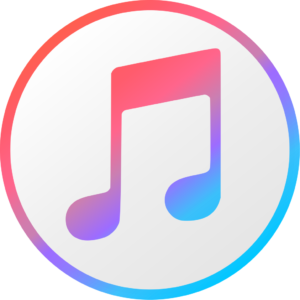 Disclaimer
Disclaimer
The information provided here is offered on an ‘as-is’ basis…i.e. it worked for me and others, it should work for you, but you use it entirely at your own risk. If you don’t know what you’re doing, ask a friend who really knows what they’re doing.
Why would you want to do this?
If you use an SSD drive like I do for your ‘C:’ or ‘system’ drive, chances are it won’t be terabytes in size as SSD drives are quite expensive…but they are fast, very fast, compared to bits of rotating ceramics with a moving mechanical read/write head.
When you back up your iPhone (you do do that don’t you?), it can take many gigabytes of disk space which your computer system drive could really do with. If you have an iPad or another iOS device to back up, the problem is compounded.
Surely it’s just a setting in iTunes?
Well, you would think so, wouldn’t you…but no, there is no such setting. What we need to do is move the backup folder on to a larger drive where speed isn’t essential but space is vast.
Here’s the method from an Apple Forum ‘DOC-7392#relocate’ with a few of my embellishments. This is very much PC and Windows focused, but there is an iOS option for your Mac at the end.
On computers with SSD system drives any iOS device backups can take up a significant proportion of the available space. iTunes doesn’t provide a mechanism for choosing where this backup data is stored, but it can be relocated onto another locally connected drive and a symbolic link or junction put in place so that it appears to iTunes as if the data hasn’t moved.
This set of steps would place the data at E:\MobileSync\Backup but the path could be adjusted to suit. Close iTunes while you do this.
- Change your folder options to display ‘Hidden Files, Folders and Drives’
- Make a new folder called MobileSync at the root of the drive you want the backup data to live on, e.g. as E:\MobileSync.
- Use Windows Explorer to move the current Backup folder at <SystemDrive>\Users\<User>\AppData\Roaming\Apple Computer\MobileSync\Backup into the folder you just made, e.g. using Ctrl+X to cut from the current location and then Ctrl+V to paste into the new one. If the backup folder is large this may take some time…remember, it may be well over 10GB.
- To make iTunes look for the data in the new location copy the text below, open a command prompt, right-click to paste in the command, edit the destination drive letter/path if needed, and then press <Enter>.
MkLink /J “%AppData%\Apple Computer\MobileSync\Backup” “E:\MobileSync\Backup”
If you’ve installed iTunes from the Microsoft Store use this command instead.
MkLink /J “%UserProfile%\Apple\MobileSync\Backup” “E:\MobileSync\Backup”
If all is well, you should get a message saying that ‘Junction created for c:\Users\<username>\AppData\Roaming\Apple Computer\MobileSync\Backup <<===>> E:\MobileSync\Backup’. You will also notice a ‘Backup’ shortcut in the original MobileSync folder.
If you don’t get the confirmation message, read through the instructions again. Remember you must move the original backup folder so that there is no ‘Backup’ folder at the original location.
Remember to turn off the display of hidden files, folders and drives again.
In Windows 10, you may have to open Powershell and type ‘cmd.exe’ to bring up a command prompt.
Here’s the Apple Mac bit…I’ve no idea if it works or not
It is possible to do something similar with OS X, but in that case it is ~/Library/Application Support/MobileSync/Backup that needs to be moved and then redirected. The redirection command in Terminal looks like this:
ln -s “/Volumes/<New Volume>/MobileSync/Backup” “/Users/<User>/Library/Application Support/MobileSync”
Where <New Volume> is the name of the volume you want to store the data on, and <User> is the name of your profile. If there are spaces in the path wrap with quotes or escape with backslash. It is probably easier to type in ln -s then drag and drop the two folders onto the command line in turn.
Note that while this method works for iOS device backups it cannot be used to redirect subfolders of the iTunes Media folder.
I hope you found that helpful…it took me a while to wade through lots of convoluted methods to find this one.